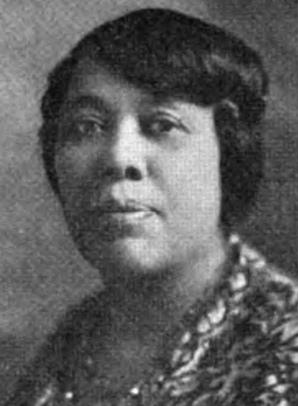Jennie Porter facts for kids
Quick facts for kids
Jennie Porter
|
|
|---|---|

Jennie D. Porter, from the August 1925 issue of The Crisis
|
|
| Born |
Jennie Davis Porter
1879 Cincinnati, Ohio, U.S.
|
| Died | 3 July 1936 (aged 56–57) Walnut Hills, Cincinnati, Ohio, U.S.
|
| Education | B.A., M.A., PhD., University of Cincinnati |
| Occupation | Activist, educator |
| Known for | First black individual to receive a PhD from the University of Cincinnati |
| Honors | Ohio Women's Hall of Fame (1989) |
Jennie Davis Porter (1879 – 3 July 1936) was an important American educator. She made history as the first African-American person to earn a PhD from the University of Cincinnati. She also became the first black female principal of a public school in Cincinnati. In 1989, she was honored by being added to the Ohio Women's Hall of Fame.
Early Life
Jennie Porter was born in Cincinnati, Ohio. Her father, William A. Porter, was a former slave. Her mother, Edlinda Davis Porter, was a schoolteacher. Jennie went to schools in the city that included students of all races. She graduated from Hughes High School.
Career and Education
Jennie Porter started her career as a kindergarten teacher. She taught at the Douglass School in Walnut Hills. During this time, many black children were moving from the South to the North. This movement was called the Great Migration. Many of these children needed schools.
Porter worked with Annie Laws to create the first all-black kindergarten. This new school opened in 1911. Later, in 1913, a big flood happened. Porter found that 147 black children could not go to school. She got permission to open a summer school for them. This summer school soon grew into the Harriet Beecher Stowe School in 1914.
Porter became the first African-American woman to be a principal in Cincinnati. Her school was very well-equipped. It had 28 classrooms. These included rooms for science, art, and cooking. It also had a laundry room, a sewing room, and a print shop. There were even rooms for building and woodworking. The school had a library, a swimming pool, and a gym. It also had a doctor's office, a clinic, a cafeteria, and an auditorium.
Some people criticized Porter. They thought she supported segregation because she created separate schools for black children. For example, Wendell Dabney, the local president of the NAACP, disagreed with her. Despite this criticism, the Harriet Beecher Stowe School grew a lot. It went from 350 students to 1300 students by 1922. Porter did not allow teachers at her school to join the NAACP.
In 1918, Porter started studying at the University of Cincinnati. She became the first black person to get a PhD from the university. At that time, black students could only enroll in the College of Education. After earning her Bachelor of Arts degree in 1924, Porter asked the college to create a new degree. This was the Bachelor of Education degree. It required students to get real-world training. Her PhD paper was about the challenges of educating black children in northern cities.
Jennie Porter passed away on July 3, 1936.
Legacy
In 1953, a new junior high school was named after Jennie Porter. This school helped ease crowding at the Harriet Beecher Stowe School.
In 1989, Jennie Porter was honored again. She was added to the Ohio Women's Hall of Fame after her death.

